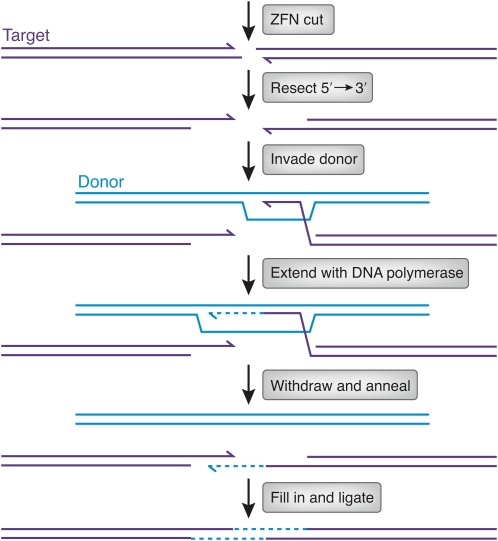Figure 5 .
Illustration of the synthesis-dependent strand annealing mechanism of homologous recombination. After ZFN cleavage, the ends of the target DNA are resected by 5′ → 3′ exonuclease action (3′ ends are shown with half arrowheads). One of the resulting single-stranded 3′ ends invades homologous sequences in the donor (thick lines). The invading 3′ end is extended by DNA polymerase (dashed line). After some synthesis, the extended end withdraws and anneals to the other end at the original break. The gaps are filled in (dashed lines; thick lines denote donor sequence, thin lines target sequence), and continuity of the strands is restored by ligation. The extent of donor sequence incorporated at the target depends on (1) the extent of synthesis after invasion, (2) whether the invading 3′ end had been chewed back, and (3) the direction of mismatch repair in the heteroduplex formed by annealing.

